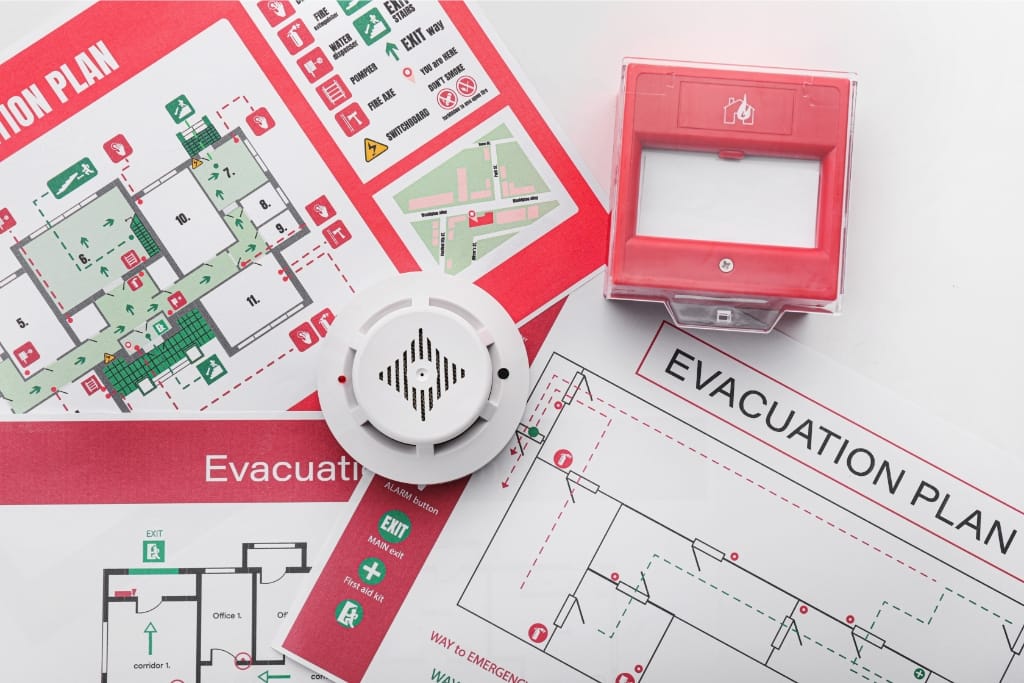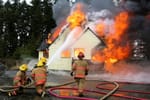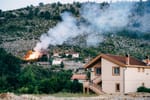Wildfires can leave communities grappling with significant challenges, including safety hazards and environmental risks.
As the flames subside, the need for vigilance becomes paramount to ensure the well-being of individuals and families alike.
It's essential to be aware of potential dangers such as toxic debris and unstable structures, as well as the importance of closely monitoring air quality.
By implementing effective safety measures, you can navigate the recovery phase with confidence, protecting yourself and your loved ones from lingering threats.
1)) Avoid Entering Burned Areas
It may be tempting to return to your home or property immediately after a wildfire has passed, but it is important to wait until local authorities have declared the area safe.
Burned areas can be unstable and dangerous, with potential hazards like falling trees or power lines.
2)) Wear Protective Gear
When returning to a burned area, be sure to wear appropriate protective gear such as gloves, sturdy shoes, and a mask to protect yourself from inhaling smoke or ash particles.
3)) Beware Of Hot Spots
Even after a wildfire has been contained, there may still be hot spots that can reignite. Be vigilant and watch for any signs of smoke or flames in the area.
4)) Check For Structural Damage
Before entering any buildings that have been affected by the fire, check for signs of structural damage such as sagging roofs or walls.
It is important to ensure that the building is safe before attempting to enter.
5)) Avoid Drinking Contaminated Water
Wildfires can contaminate water sources with harmful chemicals and debris.
Be cautious about drinking water from wells or streams in a burned area, and consider using bottled water or purifying methods instead.
Pro-Tip: Invest in a Quality Portable Water Filter
When navigating areas affected by wildfires, having a reliable portable water filter can be a game changer.
Investing in a quality filter ensures that you have access to safe drinking water, even in the aftermath of contamination caused by wildfire debris and chemicals.
Unlike relying solely on bottled water, a portable water filter allows you to purify water from various sources, reducing waste and saving money in the long run.
Many models are lightweight and easy to carry, making them perfect for emergency kits or while exploring affected areas.
By taking this precaution, you can significantly lower the risk of waterborne illnesses and promote a faster recovery for yourself and those around you.
6)) Monitor Air Quality
Wildfires can create poor air quality conditions due to smoke and ash particles in the air.
Keep an eye on local air quality reports and avoid spending extended periods outdoors if air quality is poor.
7)) Dispose Of Hazardous Materials Properly
After a wildfire, there may be hazardous materials such as chemicals or asbestos present in the environment.
Follow local guidelines for disposing of these materials safely to prevent further harm.
Tips for Safely Disposing of Hazardous Materials:
- Contact Local Authorities: Before disposing of hazardous materials, reach out to local waste management or environmental agencies for guidance. They can provide information on designated disposal sites and specific regulations.
- Use Proper Containers: When collecting hazardous materials, utilize appropriate containers to avoid leaks or spills. Sealable, puncture-resistant containers are ideal for chemicals, while bags must be marked for materials like asbestos.
- Follow Safety Protocols: Always wear protective gear, such as gloves and masks, when handling hazardous materials. Ensure the disposal area is well-ventilated and monitored to avoid any health risks during the disposal process.
Properly disposing of hazardous materials after a wildfire is crucial for safeguarding both personal health and the environment.
By following local guidelines, using the right containers, and adhering to safety protocols, individuals can mitigate risks associated with toxic debris.
Taking these steps not only protects oneself but also contributes to the overall recovery and revitalization of the affected community, fostering a safer and healthier environment for everyone.
8)) Stay Informed
Keep up-to-date on information from local authorities about road closures, evacuation orders, and other safety precautions in place after a wildfire.
Staying informed can help you make smart decisions about your safety.
Maintaining open lines of communication is vital for safety and awareness.
Keeping walkie-talkies and battery-operated emergency radios on hand allows individuals to receive real-time updates from local authorities, even during power outages.
These devices can facilitate communication with family and friends in remote areas, ensuring that everyone is informed about safety measures and evacuation orders.
Having reliable communication tools is essential for making informed decisions and coordinating response efforts, ultimately enhancing community resilience during emergencies.
9)) Seek Medical Attention If Needed
If you experience symptoms like coughing, shortness of breath, or chest pain after being exposed to smoke from a wildfire, seek medical attention promptly.
These symptoms could indicate respiratory issues that require treatment.
10)) Take Care Of Your Mental Health
Dealing with the aftermath of a wildfire can be emotionally taxing. Be sure to prioritize your mental health by seeking support from friends, family, or mental health professionals if needed.
Conclusion
In the wake of a wildfire, prioritizing safety is crucial as communities begin the recovery process.
By adhering to these ten essential guidelines—from avoiding hazardous areas to safeguarding your mental well-being—you can effectively navigate the aftermath and minimize risks to yourself and your loved ones.
It’s vital to remain vigilant, stay informed about local updates, and utilize available resources to support your recovery journey.
The path to rebuilding may be challenging, but with careful preparation and awareness, you can help ensure a safer and more resilient community moving forward.
Download Our Free E-book!







